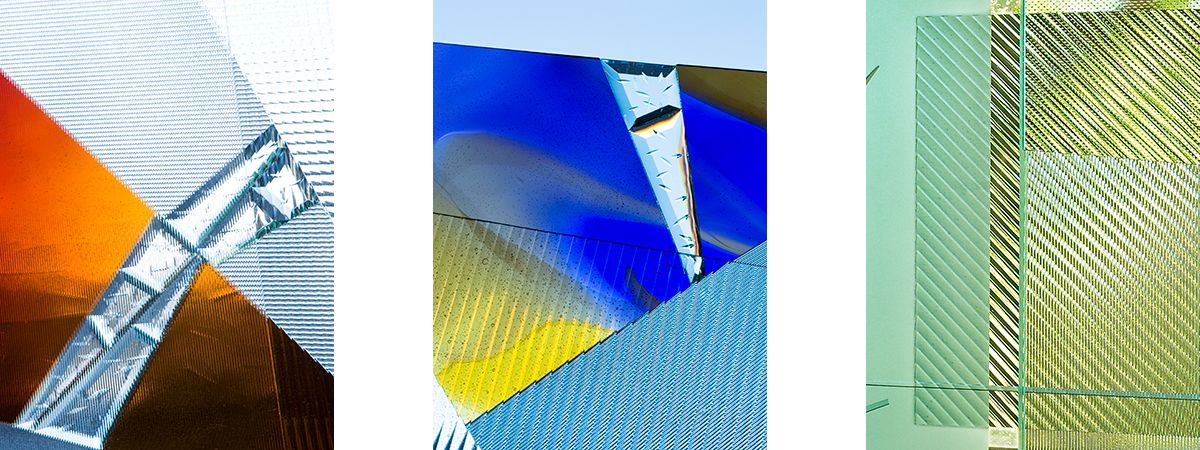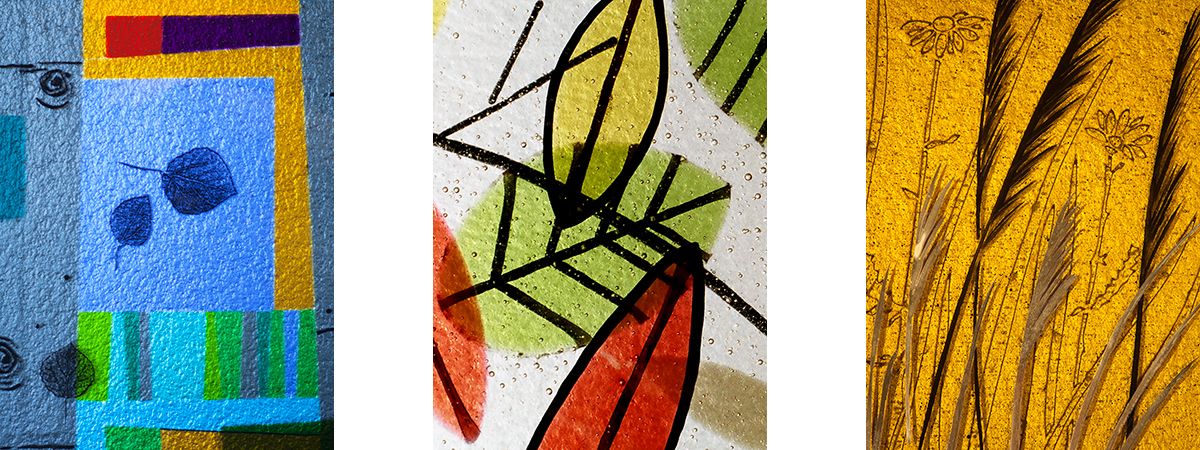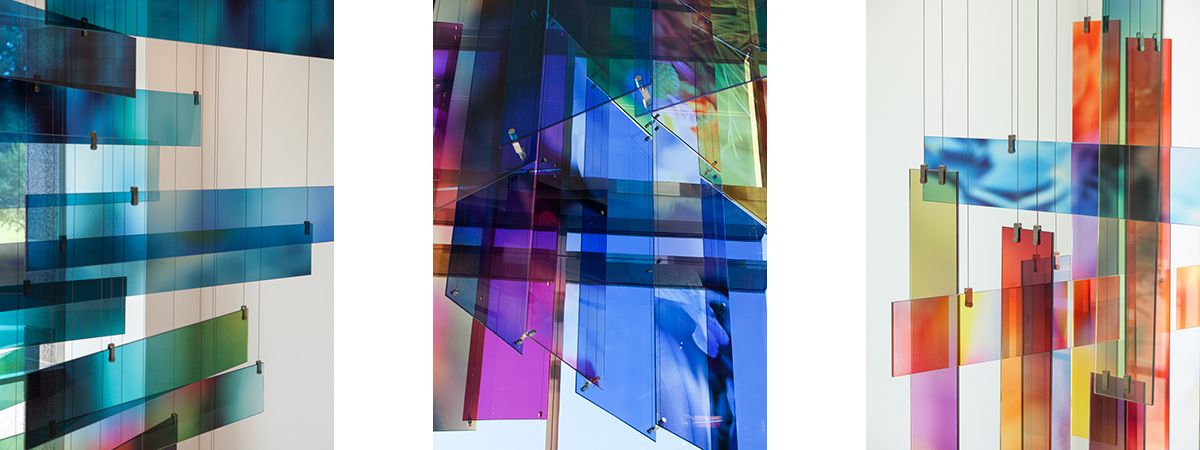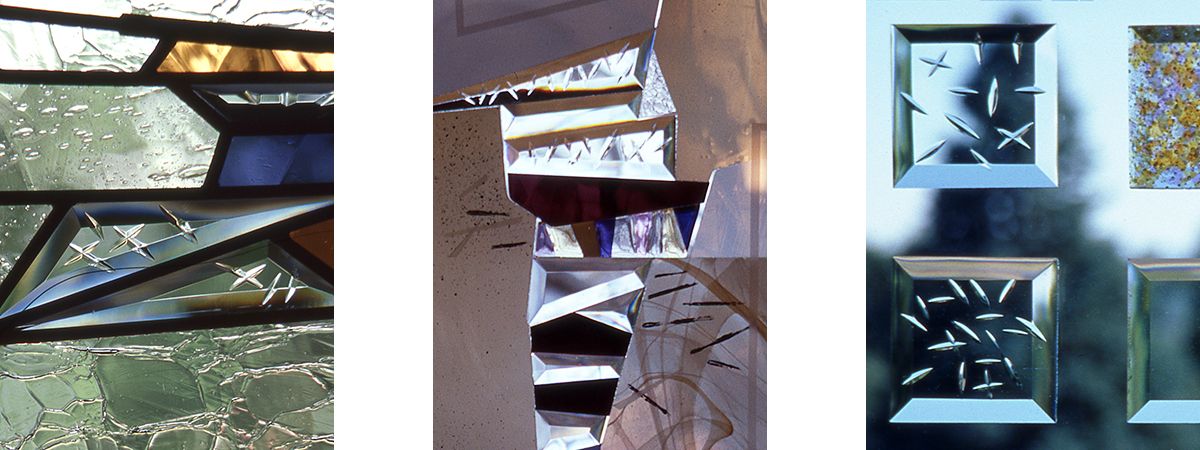
GLASS APPLIQUE
This technique utilizes crystal clear optical adhesives to apply sheets of glass or metal elements to a plate glass surface. Carving, v-grooving, painting and other techniques can be used in conjunction with optical lamination. We often light this technique using fiber optics or LED lighting along the edge. The scale is limited by available sheet size, the type of techniques used, and the ability to handle and deliver. This technique allows for the base sheet to be tempered prior to application of the elements, should it be required.

LAYERED CASTING
This technique is a process of layering 1/8 inch sheets of glass, one over the other. I incorporate glass elements including powders and paints between the layers and include metal elements and impressions to create a dimensional effect. The glass can also be etched, carved, or painted to achieve color on the surface. This technique cannot be tempered and that must be considered for code requirements.

CARVING
This etching technique can be used in traditional and modern applications and allows for a high degree of detail and subtlety. The technique itself does not have a limit on size and it can be used in conjunction with other techniques.

DYE SUBLIMATION
This process starts with custom, high-resolution photography. The images are then applied between layers of plate glass in an opacity chosen for the project, then laminated for safety. The technique is UV protected to create lasting color. The lamination allows for safety when installed overhead in an aerial sculpture.

BRILLIANT CUTTING
This technique involves incising lines by hand on the bevel face or peak using honed beveling wheels in various grits and then polishing each line out to create a crystal clear surface. Using custom 3/8 and 1/2 inch thick bevels, this technique works well for both contemporary and traditional applications. Combining the thickness of the bevel and the brilliant cutting generally enhances the quality and quantity of the rainbows created when sunlight passes through the bevels.

PAINTING
This process utilizes glass ground into powder that is mixed with a medium and applied to the surface with brushes or other tools. That is then fired in the kiln to create a permanent effect. Often, the paint must be applied one layer at a time with separate firings per layer.